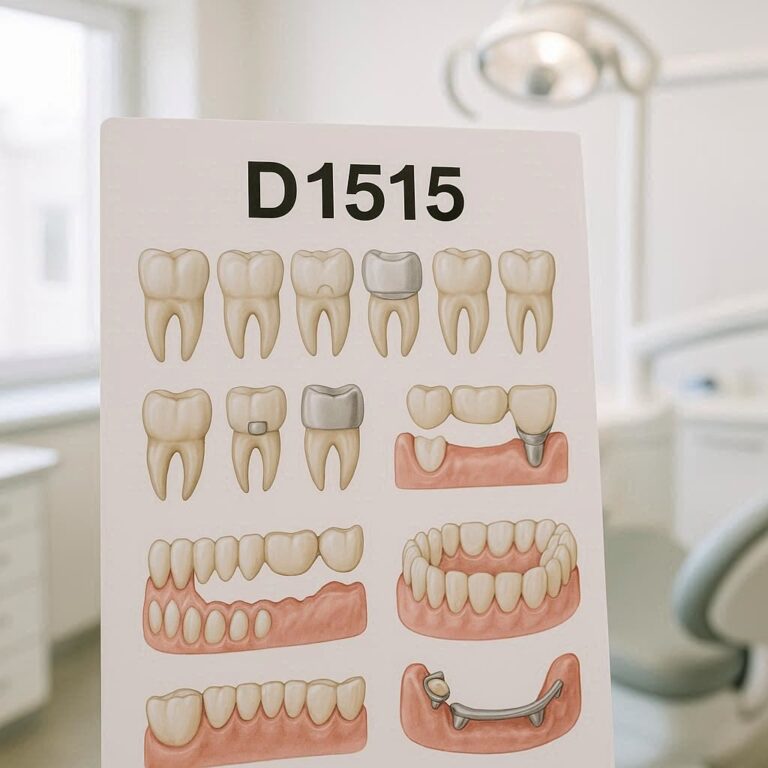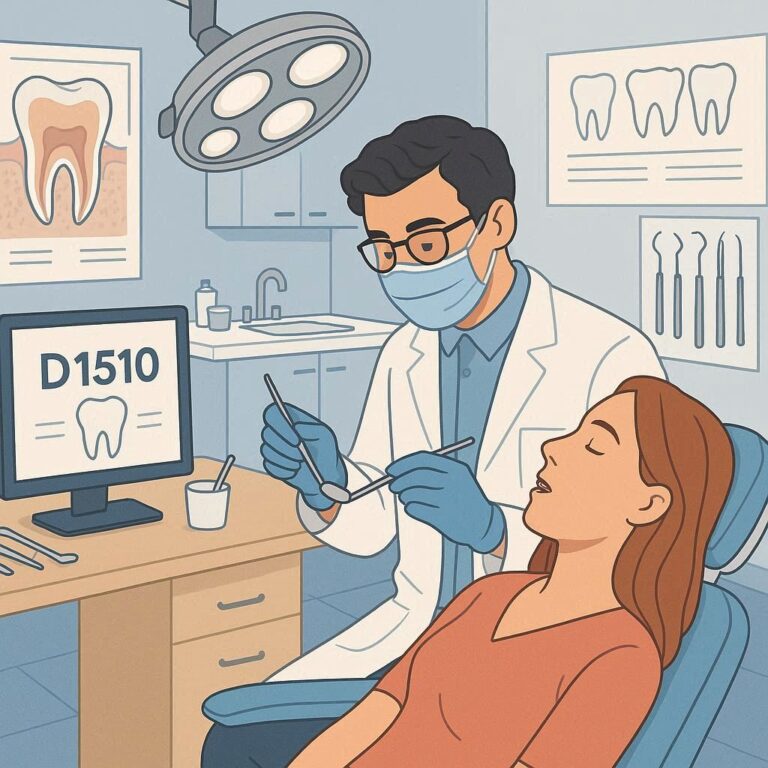Comprehensive Guide to 3-Unit Dental Bridge Code, Cost, and Procedure
A 3-unit dental bridge is a common and effective solution for replacing missing teeth. This dental prosthetic not only restores the functionality of your mouth but also enhances the aesthetics of your smile. Whether you’ve lost a tooth due to decay, injury, or other dental issues, understanding the intricacies of a 3-unit bridge—including its procedure, costs, and coding—is essential for making an informed decision about your dental health.
In this detailed guide, we will explore every aspect of the 3-unit dental bridge code associated with it, the procedure involved, costs, and other relevant details. This article aims to provide a comprehensive understanding of the 3-unit bridge, ensuring you are well-informed about this vital dental procedure.

What is a 3-Unit Dental Bridge?
A 3-unit dental bridge is a fixed dental prosthesis used to replace a single missing tooth. It consists of three parts: two crowns and a pontic (the false tooth). The crowns are placed on the teeth adjacent to the gap, which are called abutment teeth, and the pontic is suspended in the gap, effectively “bridging” it. The bridge is cemented in place, providing a permanent solution to missing teeth.
Why Choose a 3-Unit Bridge?
The decision to opt for a 3-unit bridge over other dental prosthetics is influenced by several factors. These include the number of missing teeth, the condition of the surrounding teeth, budget, and personal preference. Here are some key reasons why a 3-unit bridge might be the right choice for you:
- Aesthetic Appeal: A well-crafted bridge closely matches the appearance of your natural teeth, providing a seamless and aesthetically pleasing look.
- Functional Restoration: A bridge restores your ability to chew and speak properly, which can be affected by missing teeth.
- Permanent Solution: Unlike dentures, which can be removed, a bridge is fixed, offering a long-lasting solution.
- Prevent Teeth Shifting: A bridge helps maintain the alignment of your remaining teeth, preventing them from shifting into the gap left by the missing tooth.
Understanding Dental Codes for 3-Unit Bridges
Dental codes, often referred to as CDT (Current Dental Terminology) codes, are used to standardize dental procedures for billing and insurance purposes. The code for a 3-unit bridge varies depending on the materials used and the specific procedures involved. Here’s a breakdown of the relevant CDT codes:
- D6740: Retainer crown—porcelain/ceramic (for abutment teeth).
- D6240: Pontic—porcelain/ceramic.
- D6750: Retainer crown—porcelain fused to high noble metal.
- D6245: Pontic—porcelain fused to high noble metal.
These codes are used by dental professionals to bill insurance companies or provide estimates for patients. It’s crucial to discuss the specific codes with your dentist to understand the costs associated with your 3-unit bridge.
Step-by-Step Procedure of a 3-Unit Bridge
The process of getting a 3-unit bridge typically involves multiple dental visits. Here’s a step-by-step breakdown:
1. Initial Consultation and Examination
- During your first visit, the dentist will conduct a thorough examination, including X-rays, to assess the condition of your teeth and determine if a 3-unit bridge is the best option.
2. Tooth Preparation
- The abutment teeth on either side of the gap will be prepared by removing a portion of the enamel to make room for the crowns.
3. Impression and Temporary Bridge
- An impression of your teeth is taken to create a mold, which will be used to craft your custom bridge. A temporary bridge is placed to protect the exposed teeth and gums while your permanent bridge is being made.
4. Fitting the Permanent Bridge
- Once the permanent bridge is ready, it will be fitted to ensure proper alignment and comfort. Adjustments may be made before it is permanently cemented in place.
5. Final Adjustments and Aftercare
- After the bridge is cemented, the dentist will check your bite and make any necessary adjustments. They will also provide instructions on how to care for your new bridge to ensure its longevity.
Costs Involved in a 3-Unit Bridge
The cost of a 3-unit bridge can vary widely depending on several factors, including the materials used, the complexity of the procedure, and your geographic location. On average, the cost can range from $2,000 to $5,000 or more. Here’s a breakdown of potential costs:
- Materials: Porcelain fused to metal is typically less expensive than all-ceramic or all-porcelain bridges.
- Location: Dental costs can vary significantly by region. Urban areas tend to have higher prices than rural areas.
- Insurance: Dental insurance may cover a portion of the cost, particularly if the bridge is deemed medically necessary.
Maintaining Your 3-Unit Bridge
Proper maintenance of your 3-unit bridge is crucial for ensuring its longevity. Here are some tips:
- Good Oral Hygiene: Brush twice a day and floss regularly, especially around the bridge to prevent plaque buildup.
- Regular Dental Visits: Schedule regular check-ups and cleanings to monitor the health of your bridge and surrounding teeth.
- Avoid Hard Foods: Be cautious with hard or sticky foods that could damage the bridge or cause it to become loose.
Cost Comparison of Different Materials for 3-Unit Bridges
| Material | Average Cost | Durability | Aesthetic Appeal | Comments |
|---|---|---|---|---|
| Porcelain Fused to Metal (PFM) | $2,000 – $3,500 | 10-15 years | High | Strong and aesthetically pleasing. |
| All-Ceramic | $3,000 – $4,500 | 10-15 years | Very High | Best for visible areas. |
| All-Metal | $2,000 – $3,000 | 15-20 years | Low | Very durable but not aesthetically appealing. |
Frequently Asked Questions (FAQs)
1. How long does a 3-unit bridge last?
- A well-maintained 3-unit bridge can last between 10 to 15 years, or even longer with proper care.
2. Is getting a 3-unit bridge painful?
- The procedure is generally not painful as it is done under local anesthesia. Some discomfort may occur during the recovery phase, but it is usually manageable with over-the-counter pain relievers.
3. Can I replace a 3-unit bridge with implants later?
- Yes, it is possible to replace a bridge with dental implants later, but this would require a separate procedure and evaluation by your dentist.
4. What should I do if my bridge feels loose?
- If your bridge feels loose, contact your dentist immediately. A loose bridge can lead to further dental issues if not addressed promptly.
5. How do I clean under my bridge?
- Special floss threaders and interdental brushes can help you clean under the bridge and around the abutment teeth to prevent plaque buildup.
Conclusion
A 3-unit dental bridge is a highly effective solution for replacing a missing tooth, offering both functional and aesthetic benefits. By understanding the procedure, associated costs, and the importance of proper maintenance, you can make an informed decision about whether a 3-unit bridge is the right choice for you. This article has provided a comprehensive overview, ensuring that you have all the necessary information to discuss with your dentist.
Additional Resources
For further reading and more detailed information, you may find the following resources helpful:
- American Dental Association (ADA) Website: ADA
- National Institute of Dental and Craniofacial Research (NIDCR): NIDCR


